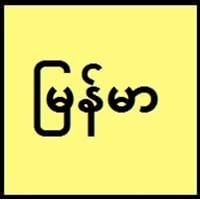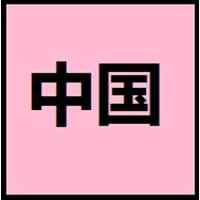Countries
Myanmar
China, Hong Kong, Macau, Singapore, Taiwan
National Language
Myanmar
China, Taiwan
Second Language
Bangladesh, Burma
Republic of Brazil
Speaking Continents
Asia
Asia
Minority Language
Mon
Indonesia, Malaysia
Regulated By
Myanmar Language Commission
Chinese Language Standardization Council, National Commission on Language and Script Work, Promote Mandarin Council
Interesting Facts
- The naming of people in Burmese is strange. There is no last name, often name is rhymed such as Ming Ming, Mo Mo or Jo Jo.
- It appears as odd language to many people because it has peculiar pitch register, tonal form as language.
- Chinese language is tonal, since meaning of a word changes according to its tone.
- In Chinese language, there is no grammatical distinction between singular or plural, no declination of verbs according to tense, mood and aspect.
Similar To
Thai Language
Not Available
Derived From
Pali Language
Not Available
Alphabets in
Burmese-Alphabets.jpg#200
Chinese.jpg#200
Scripts
Tangut
Chinese Characters and derivatives
Writing Direction
Left-To-Right, Horizontal
Left-To-Right, Horizontal, Top-To-Bottom
Hello
မင်္ဂလာပါ (maingalarpar)
您好 (Nín hǎo)
Thank You
ကျေးဇူးတင်ပါသည် (kyaayyjuutainparsai)
谢谢 (Xièxiè)
How Are You?
နေကောင်းလား? (naykaungglarr?)
你好吗? (Nǐ hǎo ma?)
Good Night
ကောင်းသောညပါ (kaunggsawnyapar)
晚安 (Wǎn'ān)
Good Evening
မင်္ဂလာညနေခင်းပါ (main g lar nyanayhkainn par)
晚上好 (Wǎnshàng hǎo)
Good Afternoon
မင်္ဂလာနေ့လည်ခင်းပါ (main g lar naelaihkainn par)
下午好 (Xiàwǔ hǎo)
Good Morning
မင်္ဂလာနံနက်ခင်းပါ (main g lar nannaathkainnpar)
早安 (Zǎo ān)
Please
ကျေးဇူးပြု (kyaayyjuupyu)
请 (Qǐng)
Sorry
တောင်းပန်ပါတယ် (taunggpaanpartaal)
遗憾 (Yíhàn)
Bye
နုတ်ဆက်ပါတယ် (notesaatpartaal)
再见 (Zàijiàn)
I Love You
မင်းကိုချစ်တယ် (mainnkohkyittaal)
我爱你 (Wǒ ài nǐ)
Excuse Me
ဆင်ခြေဆင်လက် ငါ့ကိုအ (Sainhkyaysainlaat ngarko a)
劳驾 (Láojià)
Dialect 1
Arakanese
Mandarin
Where They Speak
Bangladesh, India, Myanmar
China, Malaysia, Singapore, Taiwan
Where They Speak
Myanmar
China, United States of America
Where They Speak
Burma
China, Malaysia, Singapore, Vietnam
Native Name
ဗမာစကား (bama saka)
中文 (zhōngwén)
Alternative Names
Bama, Bamachaka, Myanmar, Myen, myanma bhasa
Not Available
French Name
birman
chinois
German Name
Birmanisch
Chinesisch
Pronunciation
Not Available
Not Available
Ethnicity
Bamar people
Han
Language Family
Sino-Tibetan Family
Sino-Tibetan Family
Subgroup
Tibeto-Burman
Not Available
Branch
Not Available
Not Available
Early Forms
Old Burmese, Middle Burmese, Burmese
No early forms
Standard Forms
Modern Burmese
Standard Chinese
Signed Forms
Burmese sign language
Wenfa Shouyu 文法手語 ("Grammatical Sign Language", Signed Mandarin (Taiwan))
Scope
Individual
Individual
ISO 639 6
Not Available
Not Available
Glottocode
sout3159
sini1245
Linguasphere
No data available
79-AAA
Language Type
Living
Living
Language Linguistic Typology
Subject-Object-Verb
Subject-Verb-Object
Language Morphological Typology
Analytic, Isolating
Analytic, Isolating
All Burmese and Chinese Dialects
Most languages have dialects where each dialect differ from other dialect with respect to grammar and vocabulary. Here you will get to know all Burmese and Chinese dialects. Various dialects of Burmese and Chinese language differ in their pronunciations and words. Dialects of Burmese are spoken in different Burmese Speaking Countries whereas Chinese Dialects are spoken in different Chinese speaking countries. Also the number of people speaking Burmese vs Chinese Dialects varies from few thousands to many millions. Some of the Burmese dialects include: Arakanese, Tavoyan. Chinese dialects include: Mandarin , Wu. Also learn about dialects in South American Languages and North American Languages.
Burmese and Chinese Speaking population
Burmese and Chinese speaking population is one of the factors based on which Burmese and Chinese languages can be compared. The total count of Burmese and Chinese Speaking population in percentage is also given. The percentage of people speaking Burmese language is 0.50 % whereas the percentage of people speaking Chinese language is 16.00 %. When we compare the speaking population of any two languages we get to know which of two languages is more popular. Find more details about how many people speak Burmese and Chinese on Burmese vs Chinese where you will get native speakers, speaking population in percentage and native names.
Burmese and Chinese Language Codes
Burmese and Chinese language codes are used in those applications where using language names are tedious. Burmese and Chinese Language Codes include all the international language codes, glottocodes and linguasphere.





